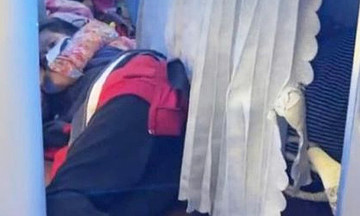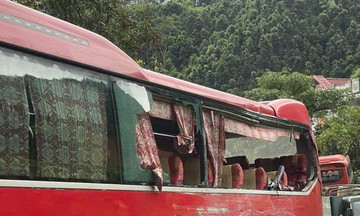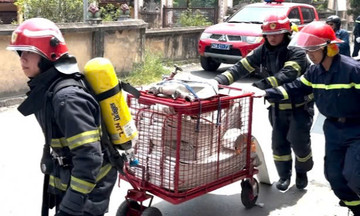As the national anthem echoed through the autumn air of 2010, 21 rounds from 122 mm howitzers boomed from the Imperial Citadel, marking the start of Hanoi's millennial anniversary celebration. A helicopter carrying the national flag soared over Ba Dinh Square, greeted by 40,000 citizens and soldiers. This marked the first time the 45th Brigade of the Artillery Corps took on the prestigious duty of the ceremonial gun salute.
Since then, the 45th Brigade's ceremonial cannon team has consistently performed the 21-gun salute, a national honor bestowed upon important occasions and visiting dignitaries. The 45th Brigade, formerly known as the Tat Thang Regiment, fired the opening shots of the Dien Bien Phu campaign in 1954 and the final salvos of the Ho Chi Minh campaign in 1975.
Lieutenant Colonel Nguyen Manh Hung, Deputy Brigade Commander of the 45th Artillery Brigade and Captain of the ceremonial cannon team, was a newly commissioned second lieutenant and 1st Platoon Leader in 2010. He recalls the pressure of transitioning seasoned artillery soldiers, confident in handling heavy howitzers, to the unfamiliar ceremonial role. "We were apprehensive because no one knew about ceremonial cannons, the protocol, or the procedures. We had no manuals and no instructors," he remembers.
In March 2010, the Artillery Corps handed over 15 122 mm howitzers, received from the Hanoi Capital Command, to the unit. A month later, the 45th Brigade began selecting and assembling soldiers for training. The chosen gunners were conscripts, at least 1.7 m tall, with a presentable appearance and proper conduct.
The howitzers were assigned to 5 platoons. Each platoon managed 3 howitzers, each operated by 3 gunners and overseen by a platoon leader. Hung's 1st Platoon was responsible for the opening and closing 5 rounds, while the other 4 platoons fired the remaining 16 rounds at regular intervals.
Initially, the soldiers trained with the 122 mm howitzers, each weighing over 3 tons. The vertical breechblock and sensitive firing mechanism required extra preparation and handling time. The 122-M30 ceremonial rounds produced substantial smoke and unburnt propellant, necessitating extensive cleaning after each firing.
The 54-second national anthem dictated the firing sequence. The first shot coincided with the anthem's first note, and the 21st shot with the last. The gunners calculated a 2.7-second interval between shots, practicing day and night. They performed tens of thousands of breechblock operations, loading drills, and trigger pulls under the commander's orders.
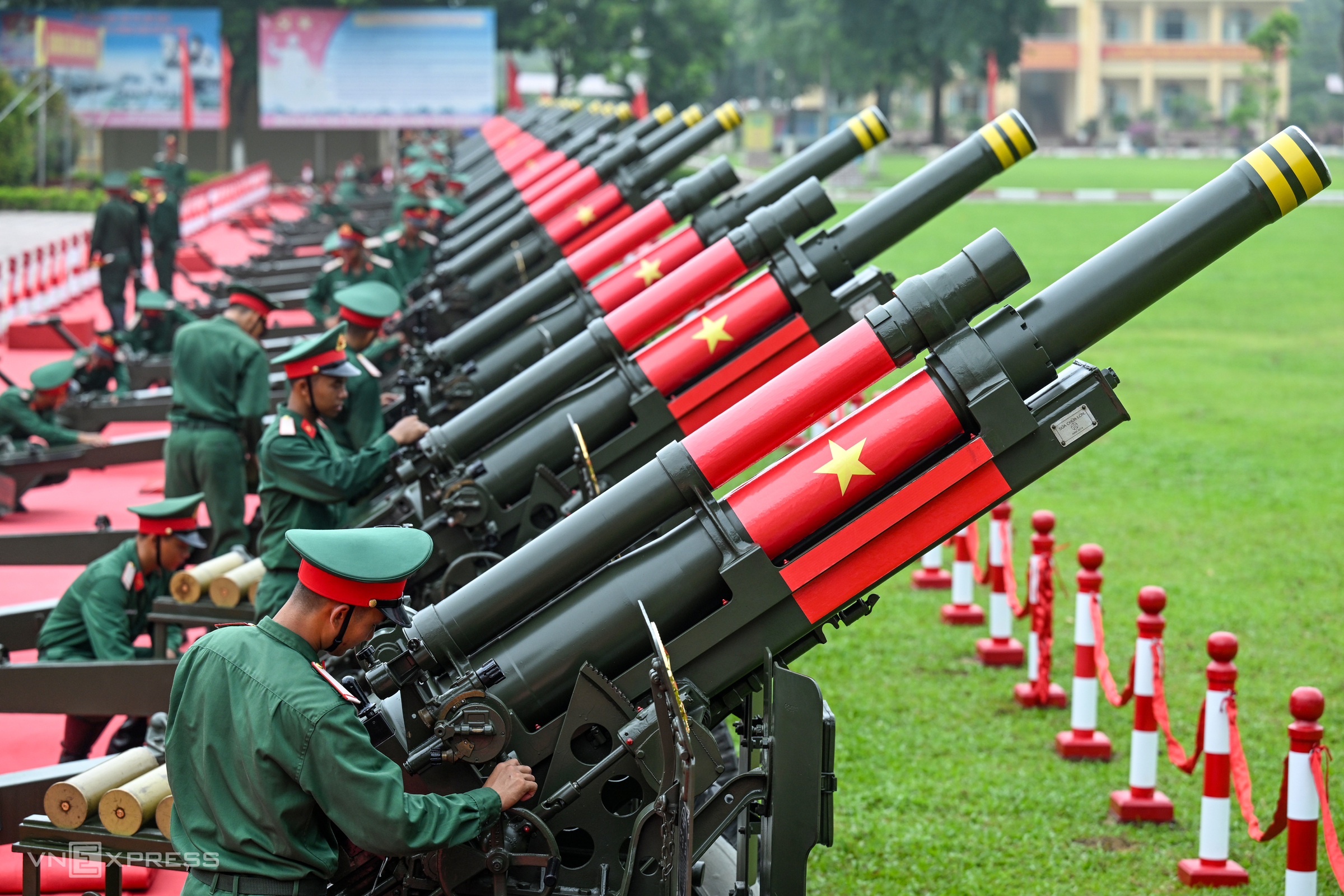 |
Gunners of the 45th Brigade practice the 21-gun salute for the 80th anniversary celebration, July 2025. Photo: Giang Huy |
After 6 months of rigorous training, their movements became refined. On the eve of 10/10/2010, Lieutenant Hung felt a sense of anticipation before his first major assignment. However, the commander encouraged the troops to "eat well and sleep soundly" in preparation. That autumn morning, they successfully completed their mission, inaugurating the grand celebration. Later that night, while returning to base past My Dinh Stadium, their slow-moving vehicles passed through crowds as fireworks illuminated the sky, making it a truly memorable day for the artillery soldiers.
The procedures, refined by generations of ceremonial gunners, are now formalized in a manual. With the firing position typically at the Imperial Citadel, the team calculates distance, velocity, wind direction, and the speed of sound, coordinating with the commander's instructions to precisely time the opening and closing shots.
"The calculations ensure that the sound of the opening shot reaches the Presidential Palace as the military band plays the first note of the national anthem, coinciding with the moment the distinguished guest hears the salute," explains Hung.
For international events, the team rehearses with both national anthems before practicing. The 21 shots are distributed based on the combined duration of the anthems, including the interval between them. Typically assigned 5-7 days prior to the event, the soldiers engage in intensive day and night training. Due to their dual responsibilities, they usually return to their regular units for daily activities and combat readiness training, assembling only for ceremonial duties.
"The ceremonial gun salute is a matter of precise timing, leaving no room for error. It represents national pride and serves as the opening ritual for important state events," emphasizes the Captain.
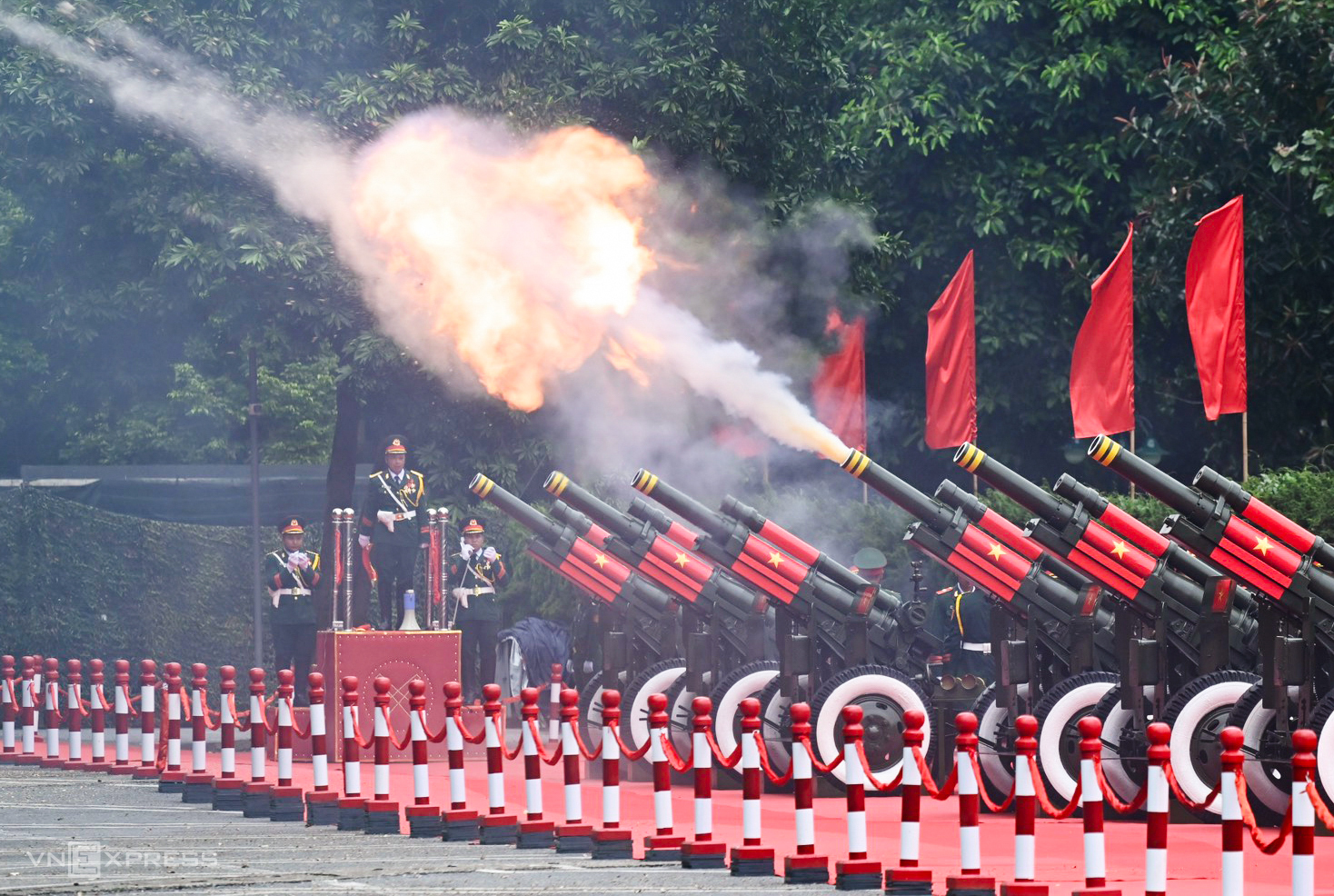 |
The cannons fire a 21-gun salute at the Imperial Citadel during the welcoming ceremony for Russian President Putin, June 2024. Photo: Viet Trung |
In 2015, the ceremonial cannons were upgraded from 122 mm to 105 mm howitzers. The Z113 Factory also improved the ammunition, reducing smoke and enhancing safety for the gunners.
Hung notes that, apart from the 21-gun salute for the 50th anniversary of Southern Liberation and National Reunification, handled by the 96th Brigade stationed in the South, all other salutes have been the responsibility of the 45th Brigade. The most memorable trip was the 70th anniversary of the Dien Bien Phu victory. The ceremonial cannon team traveled from Hanoi to Dien Bien, where, 70 years earlier, the Tat Thang Regiment fired the first shot at Him Lam, initiating the historic campaign. The officers and soldiers visited the artillery position of the 806th Company, where their predecessors maneuvered cannons, creating a legendary battlefield victory.
For the 80th National Day, the Artillery Corps contributes three elements: the ceremonial cannon team, the artillery soldier contingent, and the military artillery vehicle contingent, showcasing various artillery pieces and missiles. The ceremonial cannon team began training in mid-May. "Gunner number 3 on gun number 3, when carrying ammunition, deviated 3 cm horizontally. When returning to the original position, the movement must be decisive. Learn from this immediately," Deputy Captain Nguyen Quoc Hai's voice echoes across the training ground.
Hai explains that each howitzer is operated by 3 soldiers. Gunner number 1 pulls the trigger, number 2 operates the breechblock, and number 3 loads the ammunition. After the commander's loading command, gunner number 3 must complete the task within 3 seconds for the others to open the breechblock and fire. Achieving this speed requires 10-15 days of individual training and about a month for the entire team.
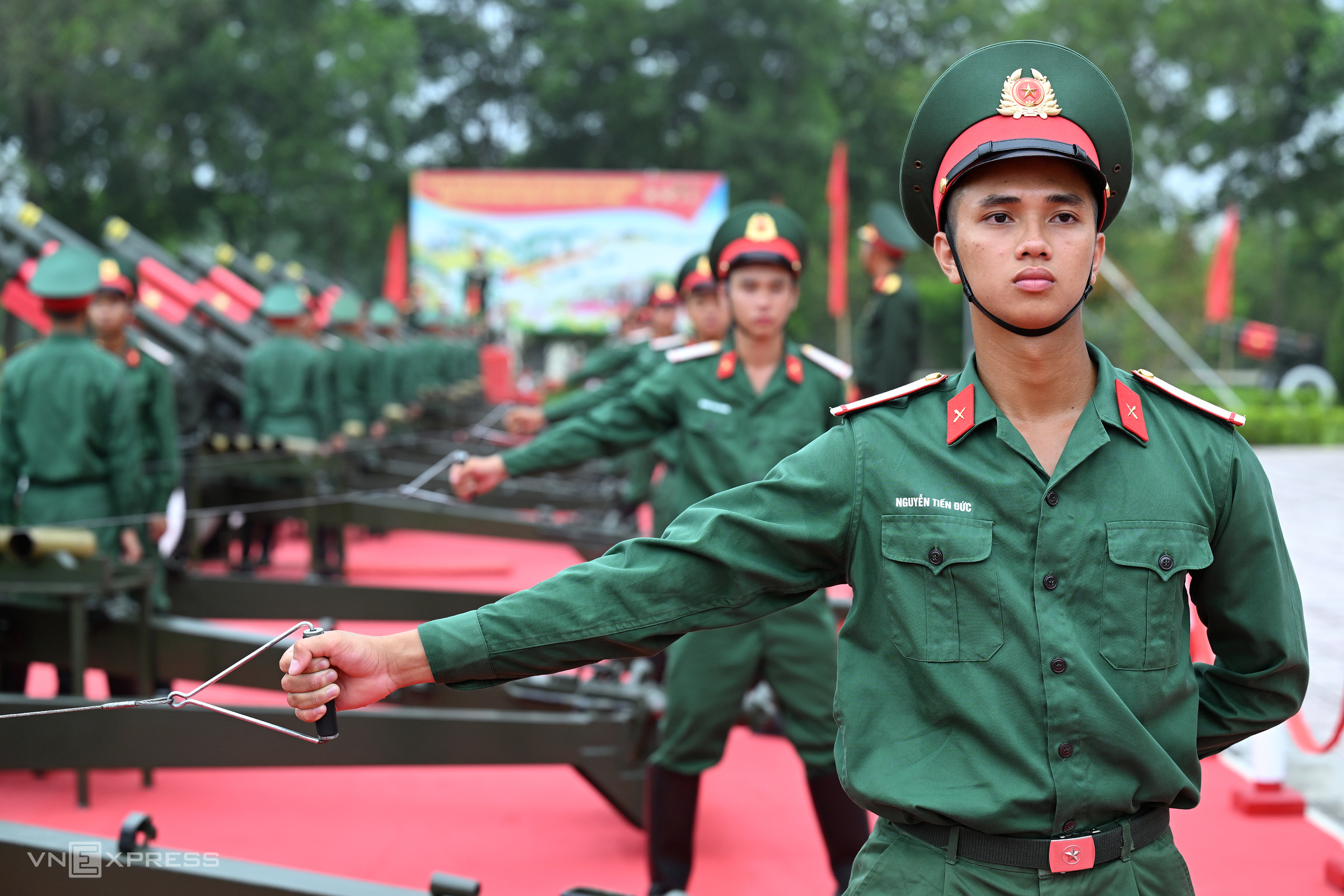 |
The number 1 gunners practice the trigger-pulling motion hundreds of times daily. Photo: Giang Huy |
Each platoon's three howitzers fire simultaneously to create a single, unified report. The number 1 gunners must pull their triggers at the exact same moment; even a split-second discrepancy results in two distinct sounds. The number 1 gunners, the most crucial members, practice firing hundreds of times each day for months, developing calloused hands.
"With operations requiring near-absolute precision and speed measured in hundredths of a second, the only way is to break down the process and practice extensively until it becomes second nature," explains Deputy Captain Hai about the stringent requirements.
At the end of each training day, the soldiers meticulously clean the breechblocks and firing pins to remove residue – a crucial maintenance routine. A group of gunners, standing beside their 105 mm howitzers, the equipment they will use for the 80th anniversary of the August Revolution and National Day on 2/9, take a commemorative photo. These young men, all wearing sergeant stripes on their regular uniforms, will don special attire for the ceremonial cannon team on National Day.
15 years have passed with numerous training seasons. Conscripts join the ceremonial cannon team and depart after completing their military service. New members are continuously recruited for this national duty. Lieutenant Colonel Hung recalls that on 30/1/2024, the team performed the salute for the visiting President of the Philippines and his wife, even though all the gunners were due to complete their service the next day.
"The training was intense, but everyone put in their utmost effort. Firing the 21-gun salute is both an honor and a responsibility, and for some soldiers, it might be a once-in-a-lifetime experience," he says.
Hoang Phuong









